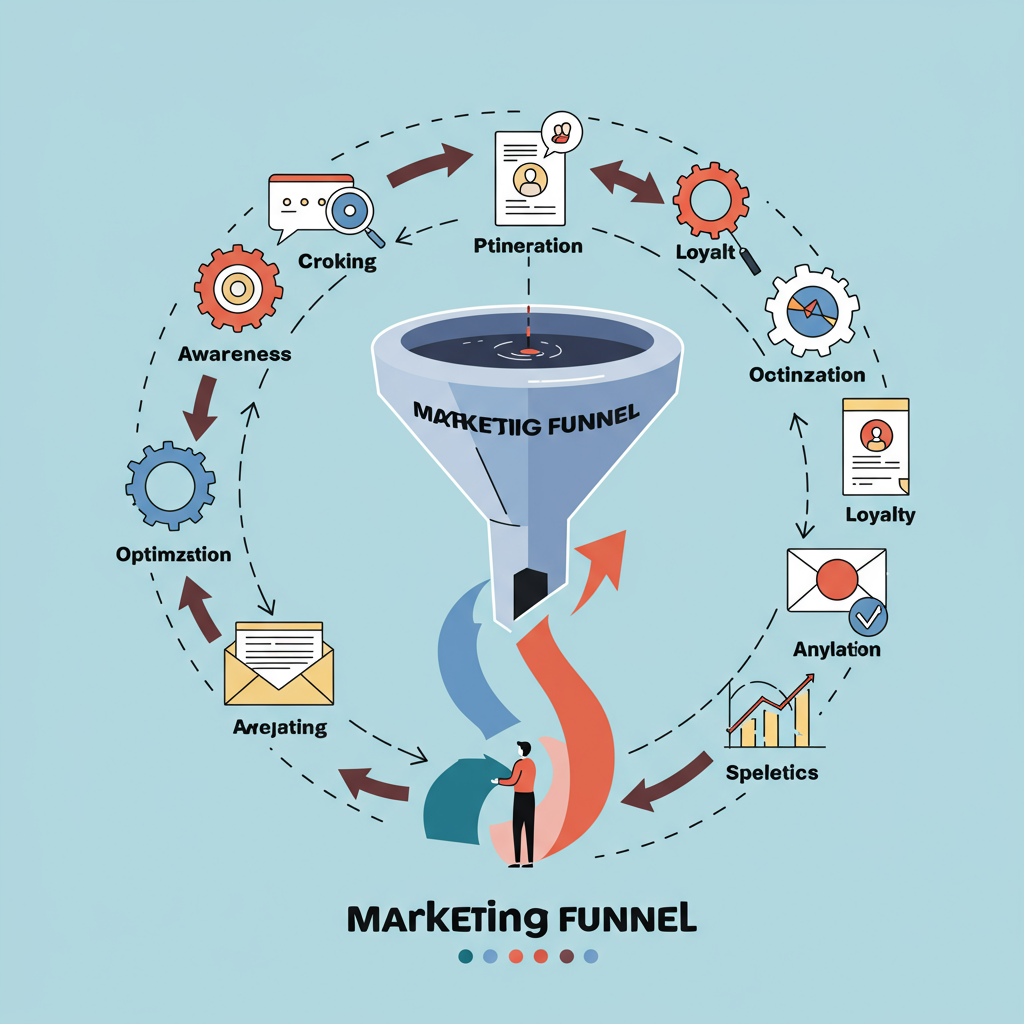Unlock Growth and Boost Conversions for Your E-commerce Store
As a Shopify merchant, I know you’re constantly looking for ways to grow your business.
One of the most powerful concepts we can leverage is the marketing funnel.
It’s not just a buzzword; it’s a strategic framework that maps out your customer’s journey from initial awareness to becoming a loyal advocate.
Optimizing this funnel is absolutely crucial for maximizing your return on investment and scaling your Shopify store.
Today, I want to walk you through the key stages of the marketing funnel and share actionable techniques you can implement right now to improve performance at each step.
Think of it as a journey your potential customer takes with us.
Our goal is to make that journey as smooth and compelling as possible, guiding them effortlessly towards a purchase.
Let’s start at the very top: the Awareness stage.
This is where potential customers first discover your brand or products. They might not even know they need what you offer yet.
Our primary objective here is to cast a wide net and attract as much relevant traffic as possible to our Shopify store.
Search Engine Optimization (SEO) is foundational. I focus on optimizing product titles, descriptions, and blog content with relevant keywords.
This helps us rank higher in Google searches, bringing in organic traffic that’s already looking for solutions we provide.
Paid advertising, like Google Ads and Facebook/Instagram Ads, is another powerful tool I use.
These platforms allow us to target specific demographics and interests, putting our products directly in front of people who are most likely to be interested.
Social media marketing is also vital. I consistently share engaging content, run contests, and interact with my audience to build brand visibility and community.
Content marketing, through blog posts, videos, or infographics, positions us as an authority and attracts visitors seeking information related to our niche.
Once we’ve captured their attention, they move into the Interest or Consideration stage.
Here, they’re exploring our products, comparing options, and deciding if we’re the right fit.
Our job is to engage them deeply and build desire.
High-quality product pages are non-negotiable. I ensure my product images are stunning, descriptions are detailed and benefit-oriented, and customer reviews are prominently displayed.
User-generated content, like customer photos or testimonials, adds immense social proof and builds trust. I actively encourage and showcase it.
Email marketing becomes critical here. I set up automated welcome series for new subscribers, offering valuable content or a small discount to encourage exploration.
Personalization is key. I use customer data to recommend relevant products or tailor messaging, making their experience feel unique.
Offering live chat or easily accessible customer support on our Shopify store can answer questions instantly, removing friction points.
Next, we arrive at the Decision or Conversion stage. This is the moment of truth – turning interest into a sale.
A streamlined checkout process is paramount. I ensure there are minimal steps, clear progress indicators, and guest checkout options.
Trust signals, such as security badges, money-back guarantees, and clear return policies, reassure customers at this critical point.
Clear Calls to Action (CTAs) are essential. Buttons like “Add to Cart” or “Buy Now” should be prominent and unambiguous.
Limited-time offers, discounts, or free shipping can provide that final nudge needed to complete a purchase.
I always make sure my shipping and return policies are transparent and easy to find, as these are common abandonment reasons.
But the journey doesn’t end with a sale! The Retention or Loyalty stage is where we build long-term relationships.
Post-purchase email sequences are invaluable. I send order confirmations, shipping updates, and follow-ups asking for reviews or offering related products.
Loyalty programs, rewarding repeat purchases, are fantastic for encouraging customers to come back again and again.
Exceptional customer service post-sale reinforces their positive experience and builds brand advocates.
I also focus on upselling and cross-selling relevant products, but always in a helpful, non-intrusive way.
Building a community around our brand, perhaps through a Facebook group or exclusive content, fosters a sense of belonging.
To truly optimize, we must constantly analyze. I regularly dive into my Shopify analytics and Google Analytics data.
I look at conversion rates at each funnel stage, identify drop-off points, and understand customer behavior.
A/B testing is my secret weapon. I test different headlines, product images, CTAs, and checkout flows to see what performs best.
Tools like heatmaps and session recordings help me visualize how users interact with my site, revealing areas of confusion or friction.
And never underestimate the power of direct customer feedback. Surveys, reviews, and support interactions provide invaluable insights.
Remember, optimizing your Shopify marketing funnel is an ongoing, iterative process.
It’s about continuous improvement, testing, learning, and adapting based on data.
By focusing on each stage of the customer journey, you can significantly boost your conversion rates and build a thriving e-commerce business.
I’ve found these techniques to be incredibly effective for my own Shopify store.
What do you think about this article? I’d love to hear your thoughts and experiences with funnel optimization.
Implementing even a few of these strategies can yield significant results.
Start small, track your progress, and watch your Shopify store flourish.






